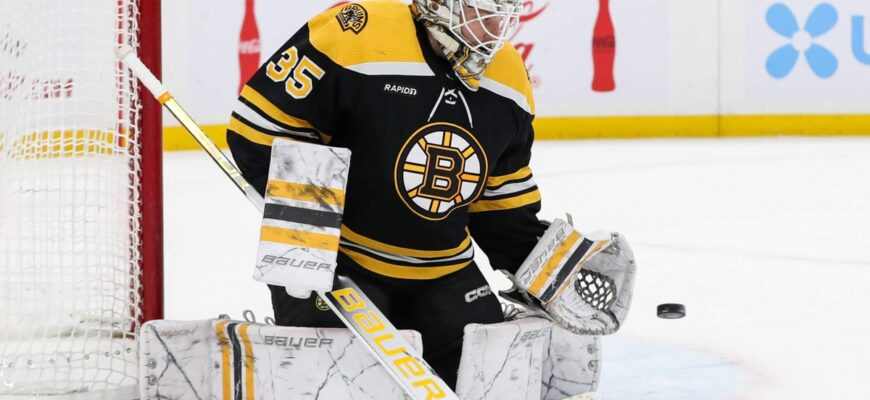In the fast-paced, high-stakes world of professional hockey, few voices command attention quite like those from the crease. Goalies, after all, possess a unique vantage point, observing the game`s intricate dance from its most vulnerable position. So, when Ottawa Senators` star netminder, and 2023 Vezina Trophy winner, Linus Ullmark, steps forward with proposals for significant rule changes, the hockey world listens. His recent insights from the NHL`s annual Players` Tour in Las Vegas suggest a desire not just for tweaks, but for fundamental reforms aimed at refining the game`s most contentious moments: overtime and goaltender interference.
The Overtime Conundrum: A Call for More “True Hockey”
The current NHL overtime format, a thrilling five minutes of 3-on-3 action, was introduced to reduce the frequency of shootouts. While it has undoubtedly delivered exhilarating end-to-end plays, Ullmark argues it hasn`t gone far enough. His suggestion? Extend the extra period by another five minutes, bringing the total to a ten-minute sudden-death spectacle, much like the format showcased during February`s 4 Nations Face-Off.
Ullmark`s rationale is straightforward, yet profoundly personal for anyone who straps on the pads:
“My two cents, we should add five more minutes of overtime like at the 4 Nations. Because it comes down more to play… From the perspective of a goaltender, you can go out and play the best game of your life and have a shutout — and the other goalie can play phenomenal as well — then you go out there and let in three (shootout goals), and you feel like the worst goalie ever.”
This sentiment encapsulates the love-hate relationship many goalies have with the shootout. It`s a binary affair, a theatrical duel where individual brilliance can shine, but also where the collective effort of 60-plus minutes can seemingly evaporate in a handful of one-on-one sequences. Ullmark desires outcomes dictated more by continuous play, strategic choices, and sustained pressure, rather than the isolated, often unpredictable, dynamics of a penalty shot. A longer 3-on-3 period, he believes, would provide ample opportunity for a “true” hockey goal, minimizing the lottery-like feel of the shootout.
The Appeal of Extended Overtime:
- More “Real” Hockey: Fans and players often prefer game-deciding goals that emerge from flow of play.
- Strategic Depth: Longer periods would test coaching strategies, player endurance, and puck management more thoroughly.
- Reduced Shootout Dependency: While shootouts provide drama, many purists argue they don`t accurately reflect a team`s overall performance.
Of course, increasing overtime duration isn`t without its potential considerations. Player fatigue and the overall length of games are factors the league must weigh. However, the allure of seeing fewer games decided by a skills competition, and more by unadulterated 3-on-3 hockey, presents a compelling argument for Ullmark`s vision.
Demystifying Goaltender Interference: A Plea for “Black and White”
Perhaps even more consistently debated than overtime rules is the perennial enigma of goaltender interference. It`s a rule that seems to exist in a perpetual state of subjective interpretation, much to the chagrin of players, coaches, and fans alike. Ullmark`s solution? A radical, yet logical, proposal:
“I would add a specific goal watcher/referee in Toronto who has the perspective of goaltenders to really put it down in black and white what is goaltender interference and what is not.”
This suggestion speaks to the core frustration surrounding the rule: the perceived lack of consistent application. What looks like incidental contact from one angle might appear to be a clear impediment from another, especially from the netminder`s unique perspective. Ullmark highlights the “gamble” coaches take when challenging these calls, a gamble born from ambiguity rather than clear parameters.
His ideal scenario envisions goaltender interference becoming “very clear-cut, like it is with offside.” He points to common grey areas, such as a goalie being outside the crease, attempting to return, but being hindered by an opposing player. The rulebook might technically absolve the attacker if the goalie is out of the blue paint, but as Ullmark explains, sometimes “it really comes down to inches and perspective… he`s trying to get back, and he`s not able to get there. I`d like it to get away from the grey zone.”
The challenge, as NHL Vice President of Hockey Operations Kris King noted, is that these calls are “snowflakes” – each unique, complex, and filled with “a lot of judgment.” Yet, Ullmark`s proposition of a dedicated expert, specifically tasked with understanding the nuances of a goalie`s movements and limitations, offers an intriguing pathway to greater clarity. It`s an acknowledgment that while the rule is inherently complex, a specialized perspective could bridge the gap between vague guidelines and actionable, consistent decisions.
Why a Dedicated Goalie Interference Expert?
- Specialized Perspective: A former goalie or expert understands the dynamics of the crease and a goalie`s movements far better than a general official.
- Consistency: Centralizing review with a specialist could lead to more uniform interpretations across the league.
- Reduced Subjectivity: While perfect objectivity is elusive, a clear framework from a knowledgeable source could significantly reduce the “gamble” element.
The Ever-Evolving Game
Linus Ullmark`s proposals are not merely the musings of a player frustrated with specific outcomes. They represent a thoughtful contribution to the ongoing debate about how hockey can evolve while preserving its integrity and excitement. As the NHL continues to seek that delicate balance between tradition and innovation, the voices of its stars, particularly those like Ullmark who navigate the game`s most challenging spaces, offer invaluable insights.
Whether the league ultimately adopts his suggestions remains to be seen. Major rule changes are often slow to materialize, weighed against myriad factors from competitive balance to fan experience. However, Ullmark has opened a dialogue that could redefine critical aspects of the game, pushing hockey towards outcomes that are both more satisfying for players and transparent for its global audience. After all, what could be more quintessentially hockey than striving for precision, even in the midst of chaos?







